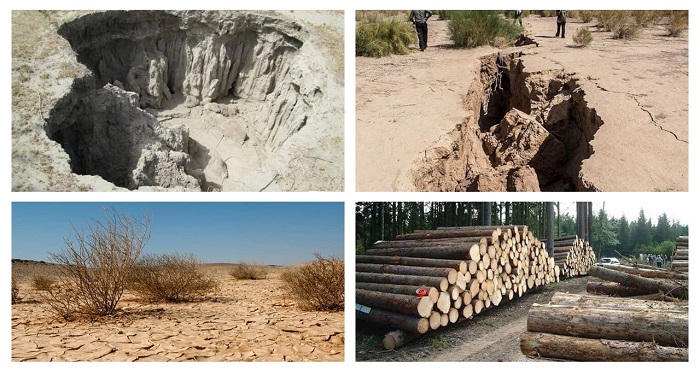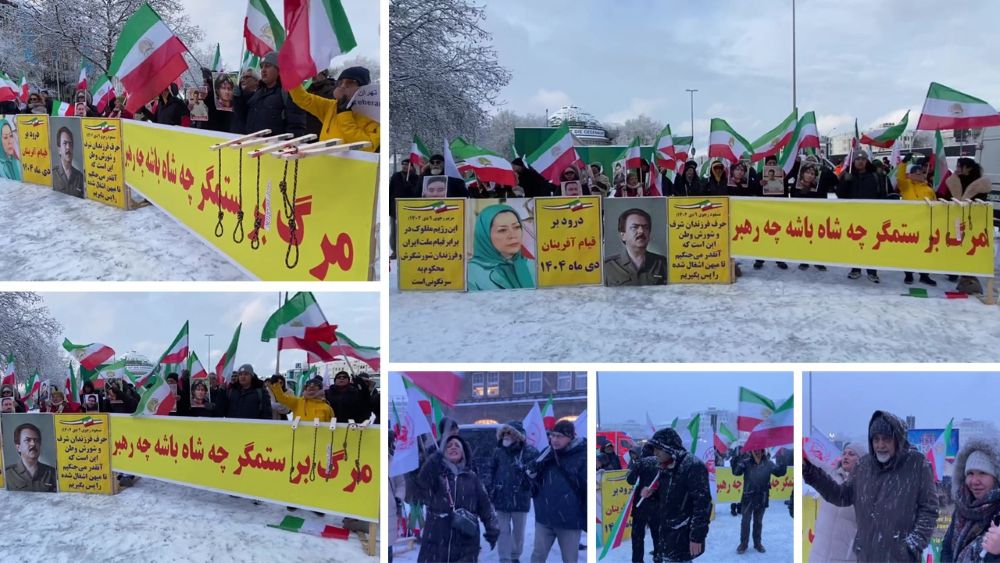
With diminishing water resources, mass deforestation, rapid desertification and severe air pollution, Iran is in the midst of an unprecedented environmental crisis. For years, Environmental scientists have warned that these problems threaten Iran and the stability of the Middle East region if these issues are not dealt with.
Dr. Khalil Khani a senior environmental expert in the National Council of Resistance of Iran (NCRI) website wrote, “Tehran is consistently advocating to prove that these calamities are due to global warming, sanctions, and persistent droughts, but it has to be emphasized that all such crises are the results of extreme mismanagement, the plundering of Iran’s natural ecosystem, and the oppressive rule of the clerical system.”
The serious nature of the environmental challenges in Iran has led to protesters incorporating the issues into the daily socio-economic demonstrations. Environmental stability in Iran is important when it comes to national security, as it directly affects the country’s economic growth and food security.
Iran’s many environmental challenges, while primarily causing a domestic problem, may also contribute to threats at regional and global levels. Internally, the environmental degradation has already given cause to political unrest, which will only become worse if nothing is done to find solutions to the problems.
Dr. Khani wrote, “Increased population, war, air pollution, water over-extraction, consumption and pollution, unrealistic industrial goals, unsustainable agricultural policies, destruction of natural resources, and lack of enforcement of the existing environmental regulations have contributed to Iran’s current environmental crisis.”

Farmers are being forced to migrate from rural villages closer to Iran’s cities and towns as water resources are consistently being diminished, and greater production demand is being placed on the scarce remaining arable lands as most of Iran’s agricultural land is gradually turning to desert. So far, the rapid desertification in Iran has led to the country losing more than two-thirds of its agricultural land.
As for Iran’s urban areas, the severe air pollution is making living conditions extremely tough. The pollution in Tehran, and many other larger cities, is so bad that schools, businesses and government offices are forced to close regularly because of the high level of toxicity. Annually, over 40,000 deaths are attributed to air pollution in Tehran alone.
Khalil Khani worte, “The Leadership of Iran, in tight association with the Islamic Revolutionary Guard Corps (IRGC), has created a prolonged, self-promoted environmental crisis that is primarily the result of incompetence, absolute mismanagement, and systematic corruption at every level, especially at the highest level of the regime.”
All of the Iranian regime’s agricultural and industrialization policies have only ever been pursued with the intention of benefitting the elite of society in Iran. Poorer communities have suffered as a result of water and other natural resources being diverted away from them, and have had to consistently disproportionately deal with the consequences of water shortages and the loss of arable farmland.
Following the Iran-Iraq war, the IRGC became one of Iran’s most powerful institutions. The regime’s Supreme Leader Ali Khamenei ordered them to form the civil construction and engineering institution Khatam al-Anbiya, which has helped the IRGC to secure their place alongside the regime to this day.
As many of the regime’s factions were keen to establish links to the IRGC, the business began to gain bids to build dams, railroads, refineries and harbours across Iran, allowing them to expand their influence throughout Iran’s economy.
Mr. Khani worte, “Iran under the clerics is currently faced with the most critical environmental issues in its history. Its climate lives, natural ecosystem, and its future as the cradle of civilization are all at risk. While the magnitude of that thought can be extremely overwhelming, we mustn’t feel hopeless, helpless, or uncertain of where to begin.”



